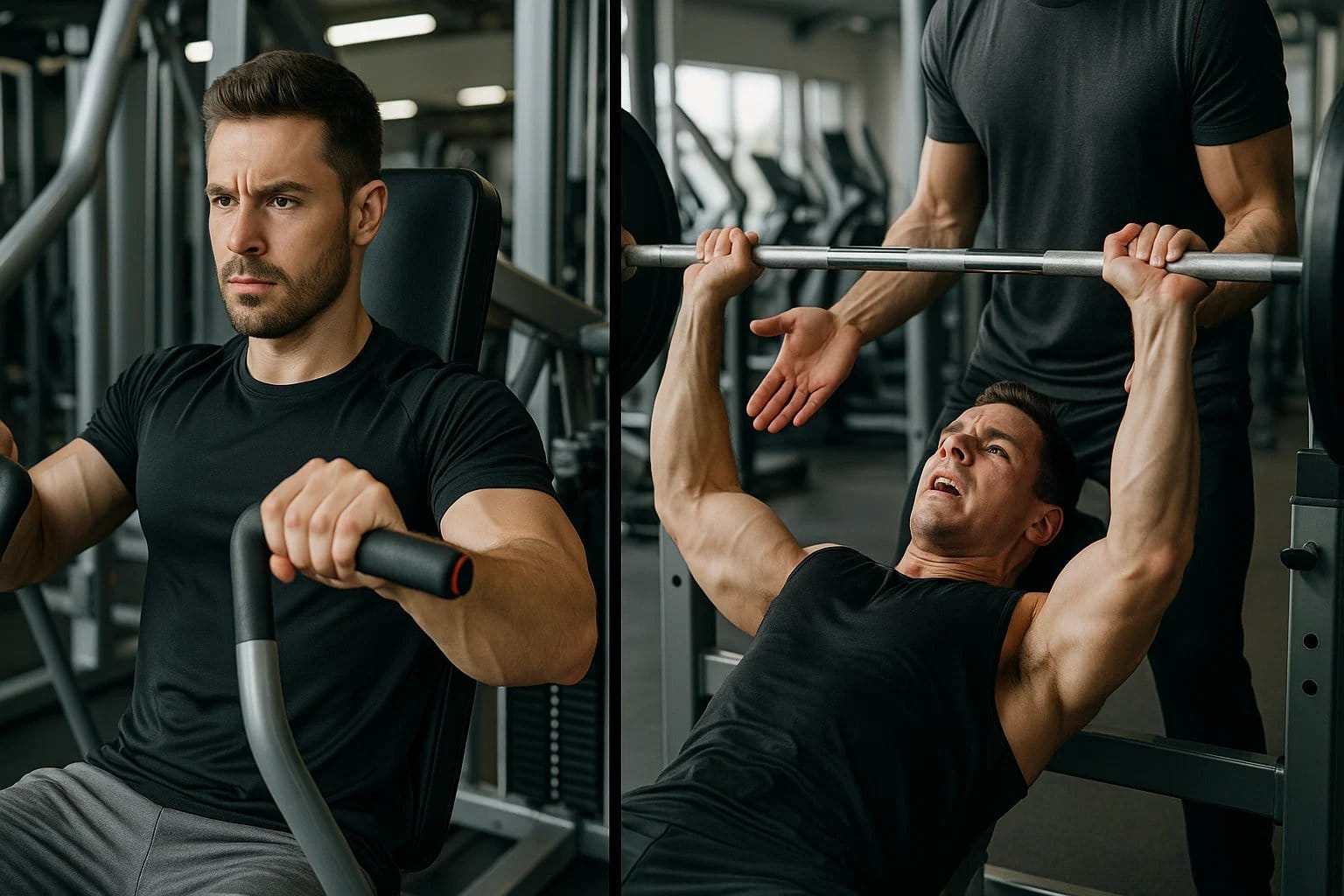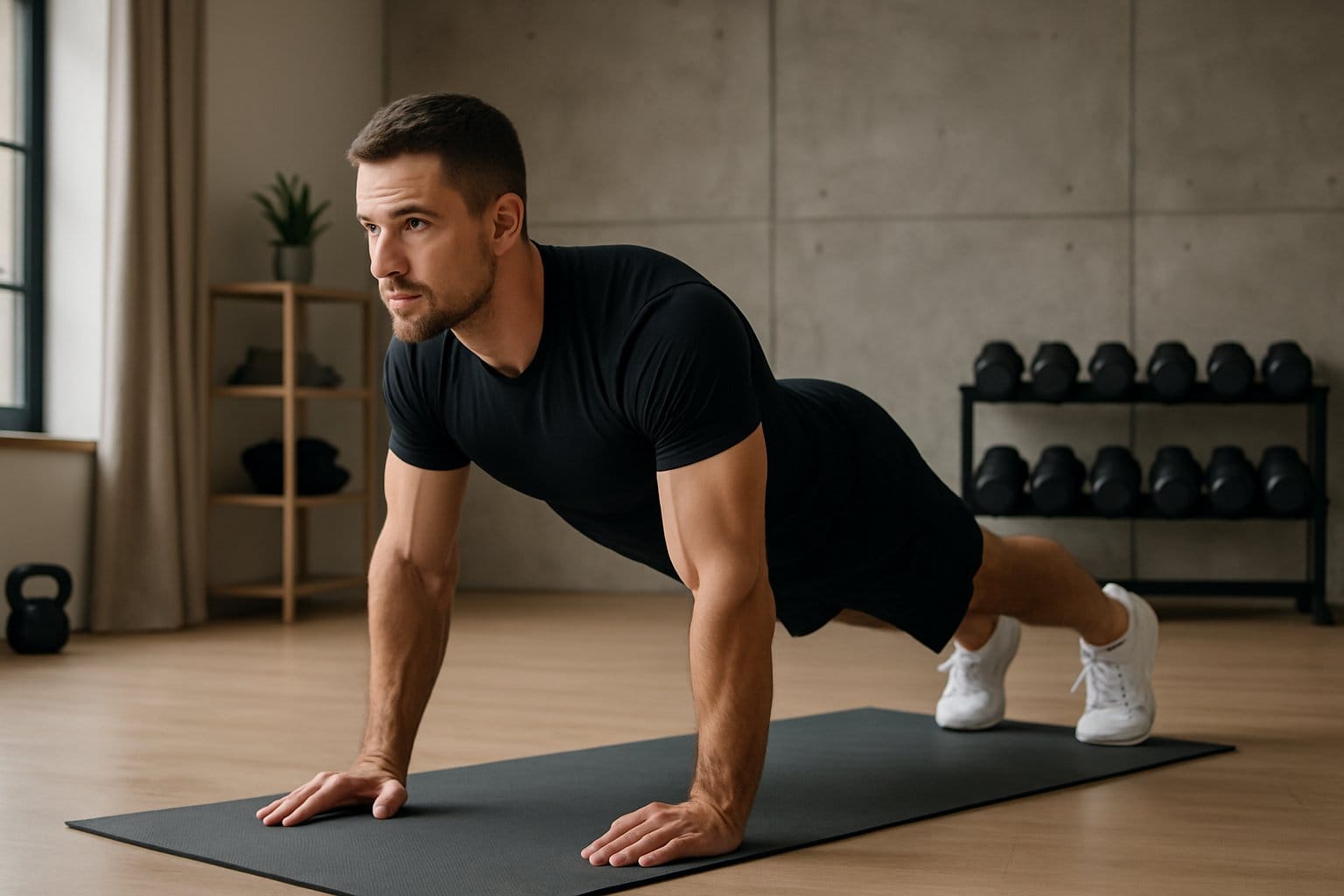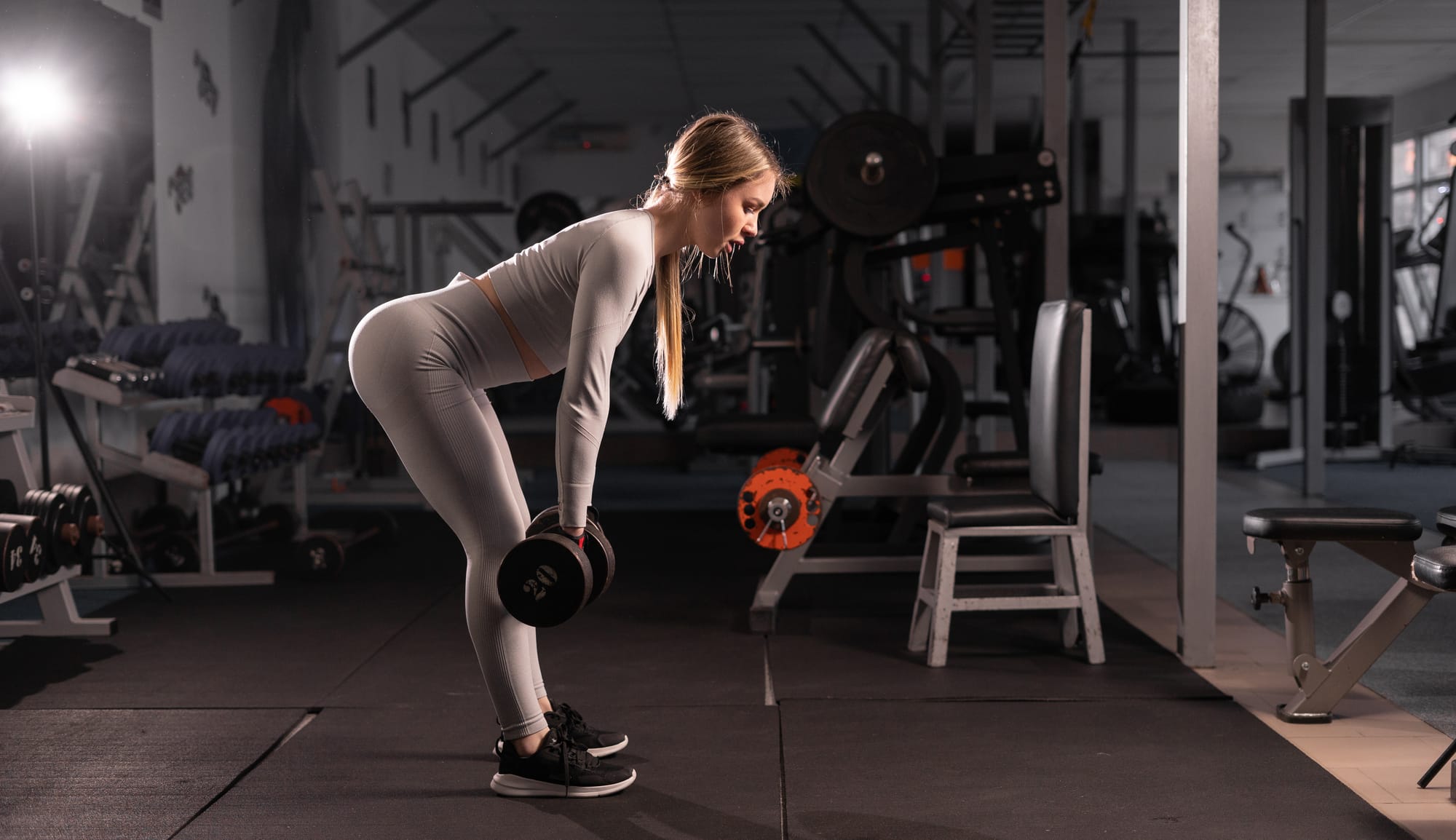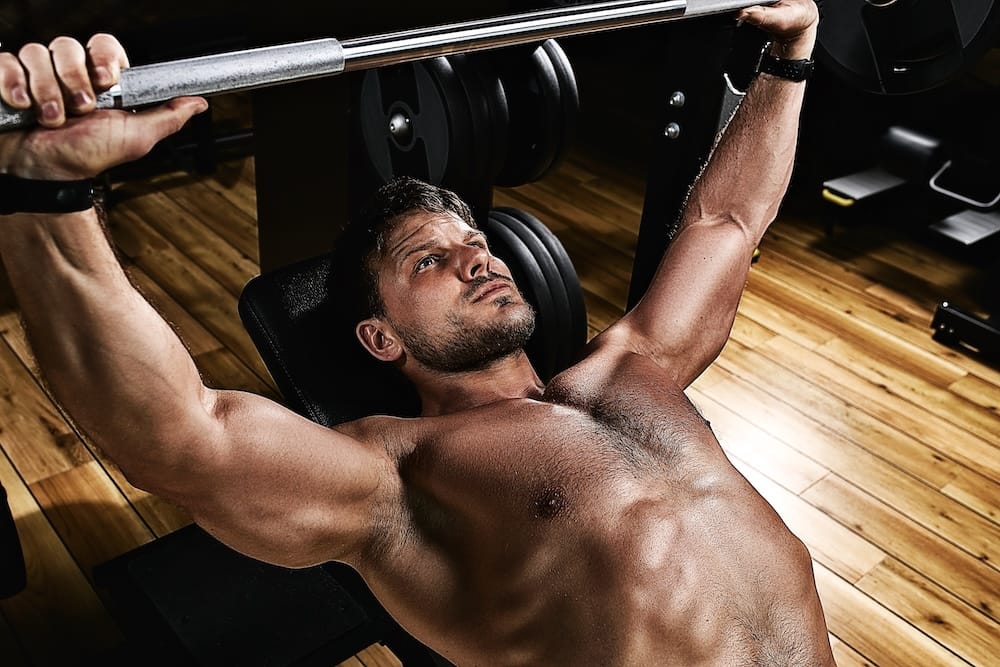Overhead Squats: Improve your Strength and Core Stability
What are the benefits of overhead squats? Compare overhead squats with barbell back squats, which one is a better workout for you?...
As you work on improving your squat technique, experimenting with different squat variations may be something you feel ready for.
Have you tried unweighted or barbell back squats? If so, let us introduce you to the overhead squat.
In this squat variation, you squat with your arms extended while lifting a barbell over your head. This differs from the back squat, where the bar sits across the upper back.
This article will give you the fundamentals of how to do an overhead squat, which muscles this exercise works and the benefits of overhead squats.
We’ll also compare it to another similar exercise: the barbell back squat. Let’s get to know this unconventional squat variation.
How to Do an Overhead Squat
First, let’s see how overhead squats are done with a simple step-by-step guide.
Set-Up:
- Stand with your feet shoulder-width apart.
- Hold a barbell with a wide grip (snatch grip) and lift it overhead.
- Fully extend your arms, locking your elbows, with the barbell aligned over the middle of your feet.
- Engage your core muscles to stabilize your spine.
- Keep your eyes looking forward or slightly upward to maintain a neutral head position.
Body Position:
- Keep your chest up and shoulders active, pushing the barbell slightly back to maintain balance. Your weight should be evenly distributed across your feet, with a slight emphasis on your heels.
Action:
- Initiate the squat by pushing your hips back and bending your knees, lowering your body into a squat position.
- Keep the barbell overhead, maintaining a stable and controlled movement.
- Descend until your thighs are parallel to the floor or lower if flexibility allows.
Reverse:
- Push through your heels and extend your knees and hips to return to the starting position.
- Use control and keep the barbell steady overhead through your movement. Keep your core engaged and your chest up.
Reps: 3-4 sets of 8-12 reps.
What are the Benefits of Overhead Squats?
Like any squat variation, overhead squats are a great way to strengthen and tone your leg muscles.
But overhead squats have some unique advantages as well:
1. Full-Body Strength
Generally, overhead squats are considered a compound core exercise. When performing them, you engage multiple muscle groups, like your shoulders, upper back, core, glutes, and legs. This promotes balanced overall strength development throughout your whole body.
2. Mobility and Flexibility
We don’t often think of squats as a type of mobility training, but when you break it down, a lot is going on across several joints during this move!
Overhead squats enhance mobility in your shoulders, hips, ankles, and thoracic spine (your mid-spine). This can lead to better overall flexibility and capacity for healthy joint movement.
If you experience hip pain when squatting or lower back pain when squatting, this exercise that boosts both your mobility and strength could help you achieve pain-free squats.
3. Stable Core
Holding a barbell overhead while squatting demands significant core engagement, which improves core strength and stability.
4. Balance and Coordination
The overhead position challenges your balance and coordination, helping to improve proprioception and overall body control.
5. Shoulder Strength and Stability
The exercise strengthens the stabilizing muscles of the shoulders, reducing the risk of shoulder injuries and improving shoulder health.
6. Functional Fitness
The movement pattern of the overhead squat mimics everyday activities and sports movements, enhancing functional strength and performance.
7. Posture
Overhead squats with proper form can help you correct issues with your posture. If you’re performing these moves frequently (approximately 2x per week if you want to make them part of your training program) and with the appropriate weight, you can strengthen the muscles responsible for maintaining good posture.
8. Athletic Performance
Athletes can benefit from the power, stability, and flexibility developed through overhead squats. So clearly, working overhead squats into your workout routine can give you a whole world of benefits contributing to your overall fitness levels.
But how does this move stack up against the most popular squat variation: the barbell back squat?
Options like Smith machine hack squats or landmine hack squats are great hack squat alternatives if you have equipment restrictions.
Back Squats vs. Overhead Squats
Both overhead squats and back squats offer unique benefits, making each exercise uniquely valuable, depending on your fitness goals.
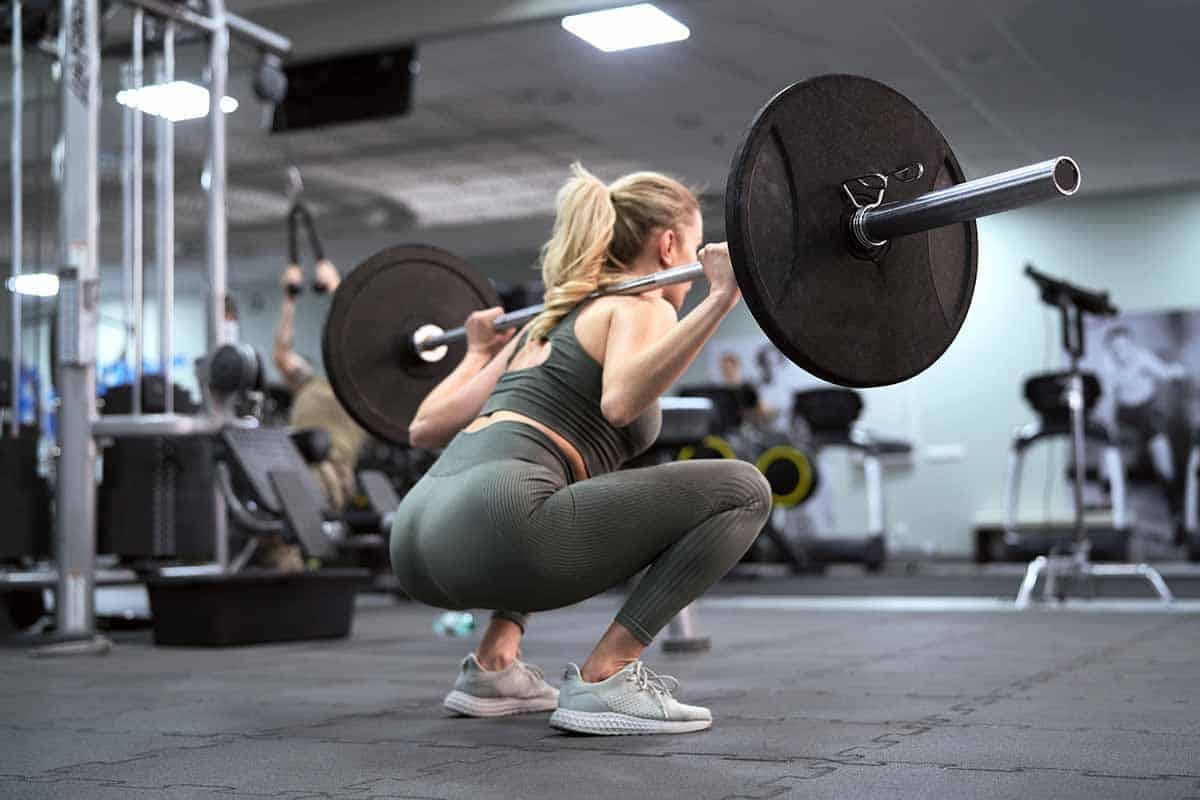
We’ve already covered the key benefits of overhead squats (just scroll up if you want a refresher).
Now, here are the key back squat benefits:
Benefits of Back Squats
The most common alternative move you’ll do to an overhead squat is the old faithful: your barbell back squat. If you’ve come to include overhead squats in your fitness routine, there’s a good chance you’re familiar with the back squat.
But just in case, let’s review a few common benefits of the traditional barbell back squat for reference.
1. Leg Strength and Hypertrophy
Back squats primarily target the quadriceps, hamstrings, and glutes, making them highly effective for building leg strength and muscle mass. Increasing leg mass and strength means you’ll need to commit a bit of time to your leg workouts.
Typically, two days per week is an appropriate frequency. To work towards muscle hypertrophy, aka growth, performing lighter lifts at higher rep (repetition) ranges can help those muscles flourish!
Don’t be afraid to start light if you’re new to any type of squat or if hypertrophy is a main goal.
2. Heavier Lifts
Because you don’t need to hoist your barbell over your head, you can typically lift heavier weights with back squats compared to overhead squats. The increased load can lead you to greater overall strength gains.
If you’re working toward one-rep maximum or five-rep maximum lifts (the most you can lift for a single repetition, or 5 reps in the latter case as a benchmark to demonstrate overall strength), you’ll find it easier to achieve here.
3. Functional Strength
The movement path of back squats mimics everyday activities, like standing and sitting. This is a great exercise to enhance your functional strength.
Back squats operate along key muscles of your posterior chain, namely, the back side of your body. In a meta-analysis, Posterior-Chain Resistance Training, when compared to general exercise, may have a stronger effect on pain management and strength levels.
4. Lower Back Strength
Back squats engage the lower back muscles to promote spinal stability and strength. Not only is back mobility, using workouts like mid-back exercises important, but strengthening your back is equally key to great spinal health.
5. Versatility
Back squats can be modified with variations such as high-bar and low-bar squats to target different muscle groups and achieve various training goals.
Comparison: Overhead Squats vs. Back Squats
Now, let's compare these two powerful exercises. We’ve broken this analysis into a few key categories for comparison:
- Muscle Engagement: Overhead squats engage more upper body and core muscles due to the overhead position, while back squats focus more on your lower body.
- Mobility and Flexibility: Overhead squats are better at improving mobility and flexibility, especially in your shoulders and thoracic spine (the mid-spine).
- Total Load: Back squats let you lift heavier weights since you don’t have to bring your barbell over your head. This makes them better suited for building leg strength and muscle mass throughout your lower body.
- Core Stability: Overhead squats give you more of a core stability challenge than back squats. Since having your arms extended overhead is a less stable shape, it requires your smaller stabilizer muscles to work overtime.
- Complexity: Overhead squats are more technically demanding. You need better coordination, balance, and mobility. On the other hand, back squats are more straightforward to learn and execute.
- Risk Factor. Finally, overhead squats are a fair bit riskier than back squats since lifting your bar over your head puts you directly in the line of fire if you need to bail. This can lead to dangerous head and neck injuries. When starting out, work with someone who knows how to spot a squat from the overhead position.
Both overhead squats and back squats in your workout routine can provide a balanced approach to strength training, addressing different aspects of fitness and performance.
So are overhead squats better for you than back squats?
We recommend back squats when you’re first learning how to squat with a barbell. After that, front squats make a good natural progression point.
For reference, the image below shows you how to position your barbell for a front squat.
After you feel comfortable with both front squats and back squats, you can progress to the overhead squat.
Big Picture
Overhead squats offer numerous benefits, making them an invaluable addition to any fitness routine.
They boost your full-body strength, improve mobility and flexibility, and boost core stability and balance. Overhead squats also promote better posture and coordination. This makes them a comprehensive exercise for your overall functional fitness and athletic performance.
Compared to back squats, you’ll need to lift a bit lighter on your overhead squats. They can, however, help you fine-tune your stability, provide an added challenge and add an element of fun to your workouts!
Related articles


Get fit with Flex
Build muscle & lose weight fast for free.
Available on iPhone + Apple Watch


